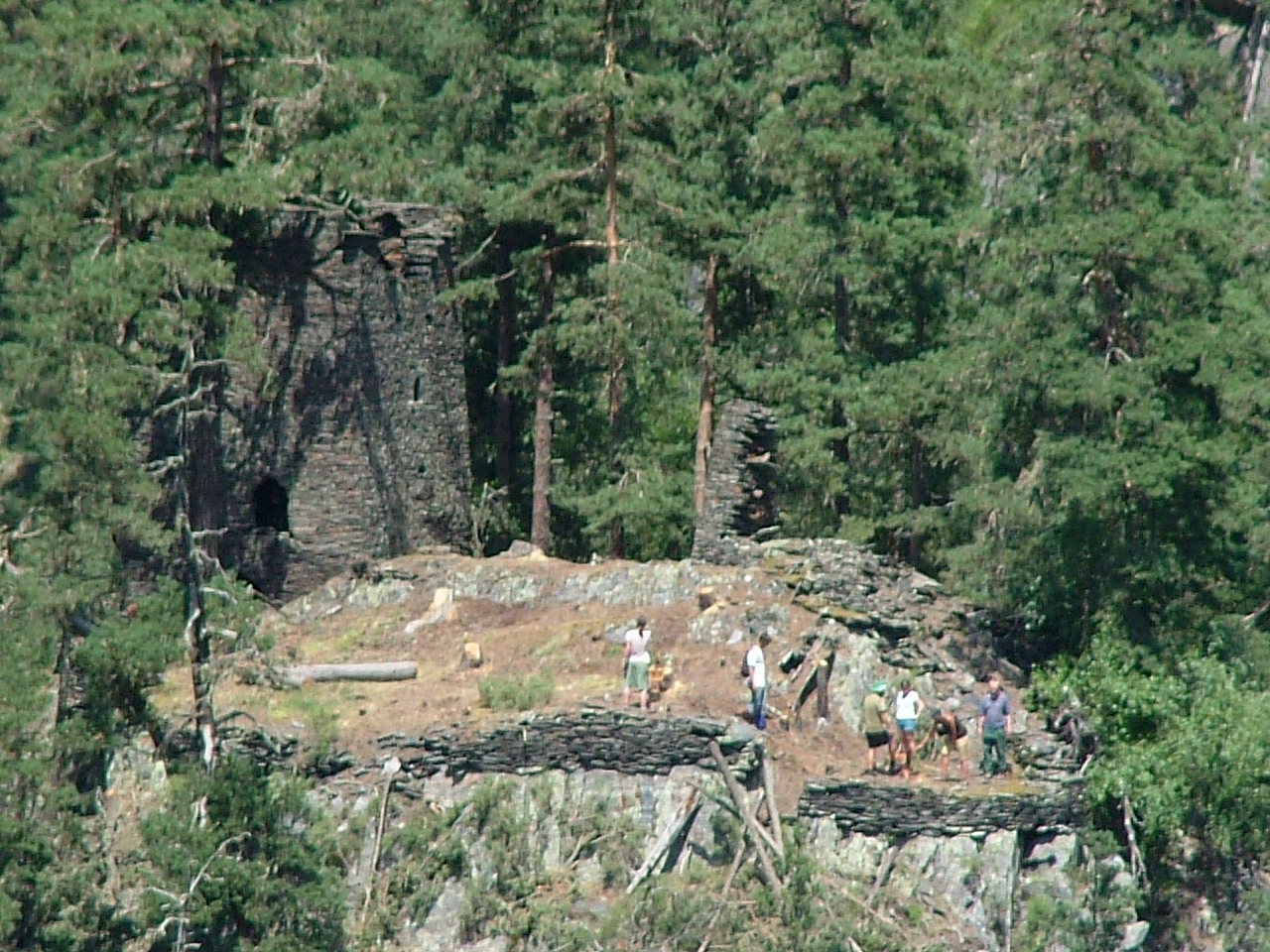Shenako, Diklo and surroundings
Shenako, Diklo and surroundings
Shenako, Ageurta and Diklo
The
road from Lower Omalo leads past a former post office and a telegraph station,
then down the hill towards Pirikiti Alazani Valley and again up to the plateau.
Shenako is about 6km far from Omalo. When approaching the village of Shenako,
you will first recognize the currently abandoned houses on the left scattered all over the
hillside that used to serve as winter homes and cowsheds. The new church from
the 19th century, built when the Orthodox Mission came to Tusheti,
dominates the village. It was reconstructed within the efforts made by the
locals and is used for sporadic church services.
Red trail from Shenako (direction Ageurta) leads you below the village to the abandoned village of Ageurta with astonishing views of the Great Caucasus range and Alazani river.
The road passable for cars will also lead you further past the old Shenako to Diklo (yellow trail, you can use alternative red trail leading through the forest). Pay particular attention to the shrine in the centre of the village of Diklo as women are not allowed here. Diklo opens a beautiful panoramic view of the border ridge between Georgia and Dagestan. Walking about 30min from Diklo you will find remains of an old village called Dzveli Galavani (today named Dzveli Diklo as well). It was completely deserted in 1837, burnt down by Imam Shamil troops in revenge for the Tushetian support to the Russian Empire. Although not much remained of the village, it uniquely illustrates the character of Tusheti fortifications from the 17th to the 19th century. You may come across Georgian border guards here. As there is a sheep pen nearby, beware of shepherds' dogs. Two more villages are located beyond the ridge. These are under Russian control (despite being in the territory of Georgia) and are inhabited by Dagestani Didos.
Legend of the Rock of Lovers
A
rock called Tsumberekhi rises firmly above Diklo. A local legend tells a story
of Bero, a young boy from Diklo, and Tsum, a girl from Kumelaurta. One day,
Bero gets seriously ill with a high fever. The people of Diklo would lay ice on
his body but this would only melt. Finally, the locals got tired and Bero was
made to leave the village. He climbed high in the mountains, reaching the
glaciers, where he changed into a frozen rock. When Tsum learned about his fate,
she decided to set off to the mountains in search of her beloved. When she
found him as a frozen rock, she sat by his side. Once, when the mass of ice
melted down, there appeared two smooth tall cliffs at the place where they had sat.
These are said to be the remains of the two lovers, Tsum and Bero.
Akochis Tsikhe (Sikharulis Tsikhe)
Castle of Love between Omalo and Shenako)
Off the road between Omalo and Shenako there is a solitary tower sometimes nicknamed the Castle of Love (Sikharulis Tsikhe, also called Akochis Tsikhe). It has been associated with a legend about true love, a Tushetian couple, counterparts of Romeo and Juliet (see below). This is an appealing one-day trip from Shenako or Omalo following a red tourist trail with sidewalk to the castle. From Shenako take marked turn from the main road with a partly reconstructed path that will lead you for about 3km through the forest to the tower. From Lower Omalo, follow the read trail crossing the main road to Shenako. From the fort you will have a view of Pirikiti Alazani Valley between Omalo and Shenako.
Legend of the Castle of Love
Towards the end of the 18th century, there lived a boy and a girl in Shenako. They loved each other but their families would not approve of their eternal love. As they showed no respect when warned by their elder relatives, they were both expelled from their villages. Nobody was allowed to help them but they still managed - they built a tower on a hardly accessible promontory above Pirikiti Alazani Valley. They grew crops and the boy hunted for animals. The fire they lacked, in the beginning, was secretly brought by an elderly woman from Shenako. When the villagers got to know, they expelled the woman as well (as a gift for the lovers to be looked after). The couple lived in the place since then and had four children (author's note: some versions talk about three children), brave sons. On a summer day (author's note: presumably the raid in 1837) the Dagestani plundered and burnt down Diklo and Shenako, and killed all the men. Only the mentioned four brothers from the Castle of Love survived. They managed to chase out the army of thousands and returned to the village. There they established their new clans and today's inhabitants consider themselves descendants of theirs. The tower is deserted today, except for some occasional visits of passersby.
Saved tree at Akochis Tsikhe
Just by the tower, there is a tree that
was originally supposed to be felled down within reconstruction work as it cast
shade onto the tower entrance. Then a five-year-old Maruška, a daughter of the
head of the Czech volunteer team, shed tears for all the already felled trees
and begged: "Such magnificent trees and you are cutting them down, not leaving
a single one. Let at least this one survive." All the present agreed that
Maruška was right and that the stately pine tree would not obstruct the view of
the fort. Since that time, the people call this tree "Maruška" (pron.
Marushka).

